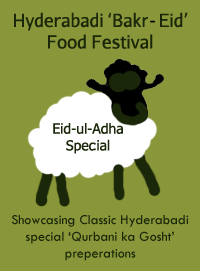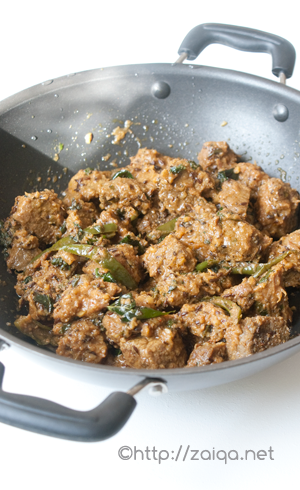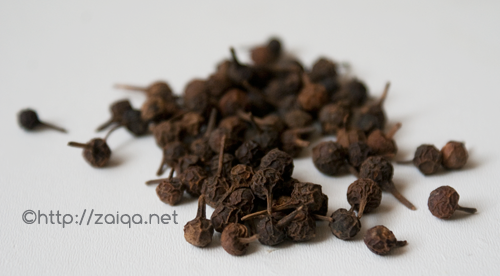Brr, its cold outside. Curled up on my sofa under a soft quilt and enjoying the season with a bowl of haleem topped with fried onions, fresh herbs, ghee and few fried cashew nuts along with a splash of fresh lemon juice provides me the warmth and nourishment and makes me hopelessly nostalgic.
Haleem, a porridge made with wheat, pulses, meat, ghee is a classic Hyderabadi delicacy which has Persian origins. Back home in restaurants it is cooked in large amounts in huge cauldrons called as degh for hours together along with a range of exotic spices and other aromatics and pounded continually, until it resembles a velvety gruel like consistency. At homes, we use pressure cookers and processors to quicken the process.
This savory Ramadan speciality has a wonderful taste, and a delicious aroma. Haleem is usually prepared during the month of Ramadan(the ninth holy month of the Muslim calender in which Muslims observe fast from sunrise to sunset) and enjoyed at Iftaar and Suhoor, as it has got all the goodness to sustain and nurture a fasting body.
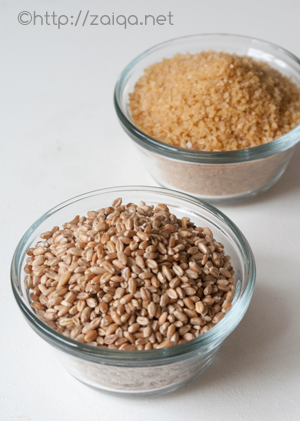
broken wheat and wheat grains
Below is my Ammi’s version of Haleem, I had also posted an another version Haleem here a while back. A yogurt qorma is prepared and mixed with the wheat+dal+meat mixture and cooked until the flavors marry and the desired consistency is achieved. My mother in law always prefers wheat grains over broken wheat for Haleem. I use broken wheat as it cooks faster.
Hyderabadi Haleem – Lentils, Wheat and Meat Porridge
Ingredients:
Boneless Lamb meat – 500 gms (or) Lamb meat with bone – 700 gms [preferably leg] – cut into small pieces
Ginger-garlic paste – 1 tbsp
Red chilli powder – 1 tsp
Turmeric powder – 1/4 tsp
Salt – 1 tsp
Chana dal – 100 gms
Broken wheat – 250 gms
For Qorma:
White poppy seeds/Khuskhus – 1 tsp
Chironji nuts – 1 tsp
Chopped almonds and cashewnuts – 1 tbsp each
Canola oil – 4-5 tbsp
Onions – 3, large, finely sliced
Cloves – 2
Cardamom – 2
Cinnamon stick – one 2″ stick
Dry Roasted Kababchini powder – 1/4 tsp
Dry roasted Cumin seed powder – 1/2 tsp
Green chillies – 4, each broken into two
Yogurt – 1 cup, lightly whisked
Red chilli powder – 2 tsp
Salt – 2 tsp
Black pepper powder – 1/4 tsp
Garam masala powder – 1/2 tsp
Cardamom seed powder – 1/4 tsp
Lemon juice – 1/4 cup/60 ml/4 tbsp
For Garnish
finely chopped Cilantro, and Mint leaves
Crisply fried onions
Lemon juice
Ghee
Fried cashew nuts
sliced/chopped Green chillies
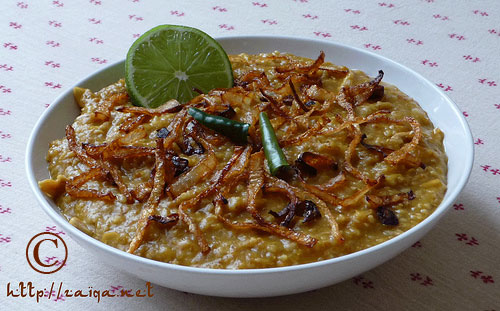
Haleem, garnished with fried onions, fresh herbs, green chillies, nuts and lemon juice
Method:
1. In a pressure cooker, add the meat, ginger-garlic paste, 1 tsp red chilli powder, turmeric powder and 1 tsp salt and pour in 1 cup water. Pressure cook until the meat is about 3/4th done.
2. Meanwhile soak chana dal and broken wheat for 30 minutes in fresh cool water. As soon as the meat is done, transfer the meat with all its juices into a bowl. Keep aside to cool.
3. Drain the soaking dal and keep aside. In the same pressure cooker, add the dal and broken wheat and pour in 4 cups of fresh cool water and pressure cook for a few minutes until the mixture is soft. Transfer to a bowl.
3. Meanwhile, shred the cooked meat and put it back into its juices and keep aside in a bowl. Discard bones.
4. Soak khuskhus, chironji nuts, cashewnuts and almonds in 1/2 cup warm water for 15 minutes. Grind them into a smooth puree.
5. In a food processor or a blender, add the cooked dal and the cooked broken wheat along with any remaining water in which it was boiled and process until well blended.
6. In a large thick bottomed non-stick saucepan at medium high heat, pour oil and as soon as it warms up, add the sliced onion and stir fry it until evenly golden brown in color. Using a slotted spoon transfer half of the fried onions onto a platter, scatter so that they cool and crisp up in a while, use these fried onions for garnish later on. Meanwhile, in the pan with the fried onions, lower the heat and add cloves, cinnamon stick, cardamom, kababchini power, green chillies and cumin seed powder. Stir fry for 10-20 secs. Add the yogurt. Mix well. Add the pureed nuts mixture and mix well. Add red chilli powder, black pepper powder and salt. Half cover and cook stirring occasionally until it leaves oil. Add the blended wheat+dal mixture and the shredded meat with all its juices and mix well. Pour in 2 cups water, and add garam masala powder and cardamom powder. Mix well. Cover and let cook on medium heat, stirring occasionally for 10-20 minutes. Remove from heat when the desired consistency of a thick porridge is achieved. Ladle in serving plates, garnish and serve warm.
This is my contribution to the “The Hyderabadi Bakr-Eid Food Festival-’09” that I am hosting on my blog. The event is on and you can all send me your Bakr-Eid special recipes before December 31, 2009. Click on the link or the logo for more details.
Luv,
Mona
